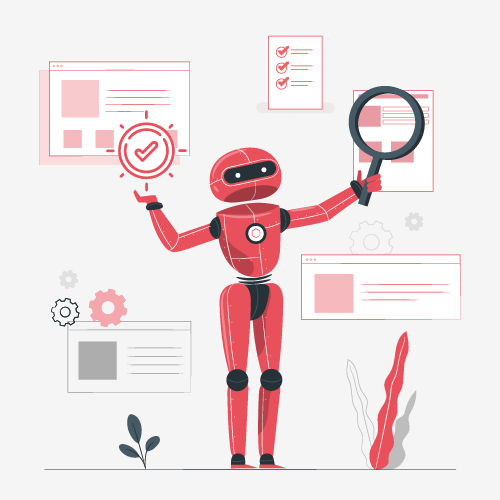Whenever an AI system processes data, it tests and measures its own performance and gains new knowledge. Since an AI never needs to rest, it can quickly complete thousands of tasks, learn a lot in a short period of time, and eventually become extremely good at whatever it is trained to do.
However, to understand how AI really works, one needs to understand that AI is not just a computer program or application software, but an entire discipline or science.
AI systems have many different parts, and you can think of them as subfields of the overarching science of AI.
These areas include:
Machine Learning: A specific application of AI that allows a computer system, program, or application software to learn automatically and achieve better results based on experience, all without programming. Machine learning allows AI to find patterns in data, uncover insights, and improve the results of any task the system is designed to accomplish.
Deep Learning: A specific type of machine learning that allows AI to learn and improve by processing data. Deep learning uses artificial neural networks that mimic biological neural networks in the human brain to process information, find connections between data, make inferences, or obtain results based on positive and negative reinforcement.
Neural Network: The process of repeatedly analyzing a dataset to find associations in undefined data and interpret meaning. Neural networks function like those in the human brain, allowing AI systems to take in large data sets, find patterns in the data, and answer questions about it.
Cognitive computing is another important part of AI systems designed to simulate human-computer interaction, allowing computer models to simulate the mechanics of the human brain when performing complex tasks, such as analyzing text, speech, or images.
Natural Language Processing (NLP) is an essential part of AI because it allows computers to recognize, analyze, interpret, and truly understand human language, whether written or spoken. Natural language processing is essential for any AI-based system that interacts with humans, whether through text or voice input.
Computer Vision – This is one of the most common applications of AI technology, using pattern recognition and deep learning to review and interpret image content. Computer vision allows AI systems to recognize elements of visual data, such as the captchas that are ubiquitous online, which are learned by humans helping them identify image elements such as cars, crosswalks, bicycles, or mountains.

What technology does AI need?
AI is not new, but it has become more widely used and used in more and more ways in recent years due to significant advancements in technology.
In fact, the explosive growth in the scale and value of AI is closely related to recent technological advancements, including:
Larger, more accessible datasets – AI thrives on data. With the rapid growth of data and easier access to data, the importance of AI will increase. Without developments like the “Internet of Things”, there are far fewer potential applications of AI.
Graphics Processing Units – GPUs are one of the key factors driving the value of AI, as they are critical to providing AI systems with the ability to perform the millions of computations required to perform interactive processing. GPUs provide the computing power AI needs to rapidly process and interpret big data.
Intelligent data processing – New and more advanced algorithms allow AI systems to analyze data faster at multiple levels simultaneously, helping these systems analyze data sets extremely quickly so that they can better and faster understand complex systems, and Predict rare events.
Application Programming Interfaces – APIs allow AI capabilities to be added to traditional computer programs and applications, actually making those systems and programs smarter by enhancing their ability to recognize and understand patterns in data.




GIPHY App Key not set. Please check settings